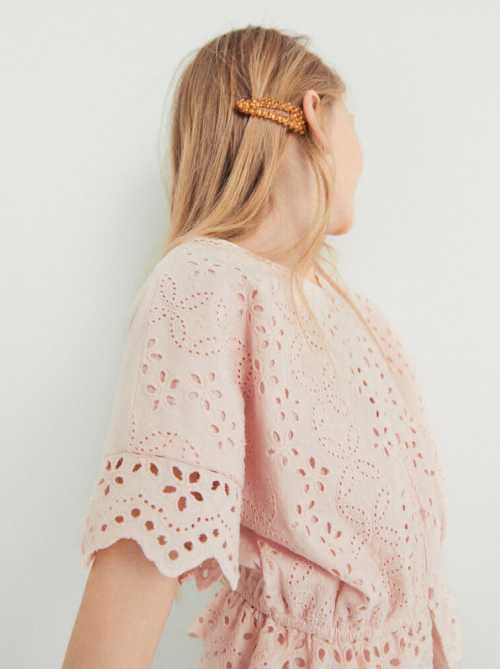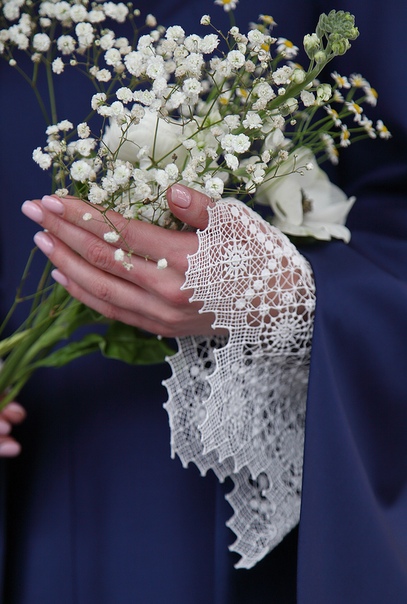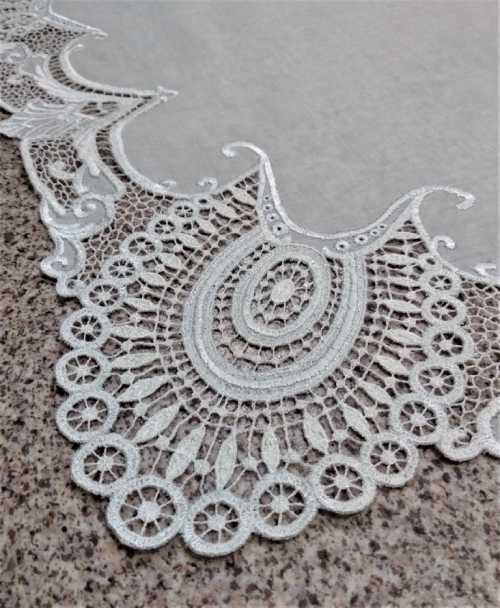Huge, extensive heritage of arts and crafts of the Russian people. Centuries accumulating it, and put the Russian people in not only their work but their soul, their dreams, hopes, joys and sorrows. In the art of embroidery crafts, created by many generations of talented craftsmen and artists, reveals the artistic talent of the people. In the work of craftsmen is being re-Union of labour and beauty. Not by chance folk art called an inexhaustible source of beautiful. The art of embroidery, like every kind of folk art, based on a deep knowledge of the embroiderers of local traditions and culture on a collective basis of their creativity, high professionalism, deep understanding of the decorative properties of the material. These historical folk traditions represent a very complex system. They are both very stable and very agile. Every generation of wizards is not simply repeated the old, long-known, but also added something new of their own. Changed living conditions, new motives and techniques of embroidery. From the past each time was selected and developed the most successful, obsolete discarded.

Products of Russian folk arts and crafts carry the weight of the aesthetic ideals of the people, their democratic attitude and high culture artistic development of materials, whose achievements are the result of experience, labour and ingenuity of many generations of talented Russian artists. In our age of technological progress, the art of folk crafts with its distinctive national characteristics determines the diversity and contribution of each of the people in the General Treasury of art of the country. Went and lost a lot of the time they spared the man and his creations, but the fact remained that what has come down to us, opens us to the unique, the noble face of the people the Creator. The art of embroidery every age and country is closely related to historical conditions, the characteristics and level of development of a people. It is due to political, economic, religious philosophies, and reflects the pressing problems of society. The value of folk art traditions is that they do not become part of history and not end his existence at a certain stage of cultural development, and continue to live and develop in the works of artists of subsequent ages. Art lives and develops by its own laws, decides their artistic tasks. And our generation is learning to appreciate and understand this special content of folk art, have become heirs of the spiritual riches, which keeps for us the artistic culture of mankind.
Each country, each nation in the individual periods of its development, left its mark, its specific features in the decoration of the clothing of people. The history of clothing from ancient times to our days is like a mirror reflecting the entire history of mankind. Clothing to which we are accustomed as to your own body, and not interested in its origin and age. We just think that she was always, at all times, especially because of the changing shape of clothes unwittingly makes her forever young. Fashion history is almost as old as the history of costume. The art of fashion is contagious and fleeting. But there are things that exist beyond time and fashion. Talented Russian embroiderers, creatively using the heritage of old folk embroidery inherent in separate regions of Russia, has always sought to preserve the historically established characteristics of embroidery of clothing and household items. Before the advent of the textile factories in Russia women's clothing was made from homespun linen and wool fabrics. It was decorated not only with embroidery but lace braid. The nature of the patterns and techniques of their implementation, the Russian embroidery is very diverse. The individual provinces, and sometimes districts, had its own characteristic methods, motifs, colours of the embroidery. This was largely determined by local conditions, way of life, customs, natural environment. An important feature of traditional clothing is the conditionality of the arrangement of the ornamentation on things. It is related to the shape and cover of both parts and the whole costume in General. The nature and amount of embroidery, even the meaning of the ornamental figures depended on the characteristic of national clothes of the feasibility, cost considerations, age differences, different customs, according to which used clothes. All this defined the position of the inlay in the horizontals and the verticals, focusing it on certain places [1. p. 30]. One of the oldest types of embroidery to decorate clothes and household items are countable embroidery.
These seams are easy to decorate oplaca, the ends of the sleeves, the cut on the chest, the hem of her apron, bottom apron, the bottom of the dress, as the embroidery stitches are in a row of threads in a fabric of plain weave.
The centuries-old tradition of the layout of the pattern determine the clarity of design things, which is expressed in a harmonious combination of sections filled with pattern with areas of blank playing the role of the background. This harmony is achieved at the expense of logic, according to which in a certain way, decorated the top and bottom things in between it and the details.
Through TraceVue embroidery typical of many regions of Russia. Strokewise embroidery called all kinds of fishnet (through) sewing. She is of light transparent patterns, which resemble lace. For most strachenyh embroidery of a fabric pre-pull out the threads of the warp and weft to form a network.
In the second half of the XIX century to replace the homespun canvas came factory fabrics. In addition strachenyh that was the basis, there's eyelet embroidery, openwork by the free loop. Such embroideries are "Richelieu", the "Welt and linen surface", "Kadoma Venise", embroidered with needle lace etc. the elegance of the openwork stitches are not subject to the vagaries of fashion. Connecting with talent and ability, it gives us the masterpieces that are called lace.
In the mid-twentieth century in Russia formed the main centers of arts and crafts in stitch-embroidery embroidery. These include krestecky, Ivanovo and Nizhny Novgorod lines. Each of them has its distinct features.
Kresttsy line – a kind of folk openwork embroidery, established in the Novgorod province and preserved at present in the town krestcy Novgorod region. Technique krestecky lines emerged in the second half of the XIX century on the basis of needle lace, which was widespread in this period in the finishing city dresses. [3. p. 14]. Stylistic features Krestetsky embroidery formed the beginning of the twentieth century, when krestecky and neighboring peasant Valdai masters began to embroider products for sale in the town and made their art the elements of urban culture.
Kresttsy embroidery, the so-called Novotna line is one of the most complex in technique the kind of stitch-embroidery embroidery. It is a combination of embroidery on a large grid with motives that run on snowcam. So-called threads, which are laid over the grid and in places where, respectively, the pattern on the fabric pre-cut squares or rectangles. Snooki fixed at the edges strachenyh motifs in the desired direction horizontally, vertically or diagonally, and then weave the working thread on them form a geometric pattern, characterized by a special delicacy, elegance and variety of pattern cutting. Using inovacnej thread is created the geometric ornament in the form of lozenges, rosettes, stars and a scattering of small and large circles. For krestecky stitch-embroidery embroidery is characterized by strict composition and laced tightly intertwined geometrical ornamental forms on the through the background, characterized by the clarity of the picture. There are many types of Krestetsky seam: "loose lace", "vintage lace", "bubble", "talata", "Vologda glass", "Novotny motive" etc. [4. p. 89].

The simplest types of Krestetsky novotney embroidery — "old lace", close to another variety of embroidery stitch-embroidery — neckline, as well as "loose lace", in which additional Sevki form a radial cutting pattern, and the remaining cells are filled seam "matting" and "spider" (four - eight snook wrap the working thread in a tight circle).
More complex "Novotny lace". To run it on the fabric cut a hole the right size, then it is delayed by nanoscale that perebivaetsya flooring as per pattern. Patterns novotneho guipure extremely diverse. The most often used "kresttsy grid" pattern of alternating dense and openwork squares.
A denser pattern Krestetsky embroidery — "Carlota": the grid is filled "basket-weave", "web-coy," and partly intertwined.
The most time consuming embroidery "Vologda glass": the columns of the grid in 6-8 threads (so-called "Tonka") is very far apart from one another, large square gaps are crossed by the diagonal nanoscale, which closed looped suture or a mesh of loops. By combining dense and delicate details of ornament formed a beautiful pattern of large diamonds, stars, rosettes, rectangles, and other geometric motifs.
Characteristic of Ivanovo lines are considered geometric and geometrized floral motifs. When you run Ivanovo white stitching, as with most strachenyh seams, used a hand needle and white reel cotton, and linen threads earlier. In the Ivanovo line interweaved with the mesh with small cells of three to five millimeters fill the primary types of joints, such as the "darning", "deck" and an "air loop", and complex strokewise the cutting – "diagonal darning", "button", "wheel with a spectral spider" – consisting of small circles and cruciform flowers, which gave the pattern a kind, incomparable texture.
Small white string was complemented by various accounts using hemstitch and embroidery, which gave even more expression to the pattern. In the folk embroidery of the Vladimir province in the early twentieth century, a pattern that combines TraceVue motives from the counting surface. The most common form of this technique is staggered rhombus, called the "Kuban". Kuban had a lot of options. Often embroidered kubanets with button, it is a terraced diamond cells that are filled with small circles. Kubanets-seed had in the corners for more small squares. Other the Kuban to the basic terraced form of a rhombus adjoined on the four sides have small Kuban.
Together they form a cross shape openwork embroidery. Often delicate kubanets was decorated with spiral curls wearing the figurative name "Coudray". Curls created a smooth transition from the massive diamond to the openwork fabric [3. p.23].
"Gorky guipure" is a traditional strojeva embroidery has long been existing in the Nizhny Novgorod region. Gorky guipure differs from other types of much greater delicacy. Gorky guipure abound convex long decks on a large grid with a cell size of from six to ten millimeters. Embroidery perform easily and freely, without pulling the seam to keep the fluffiness and lightness of the lace. General view of Gorky guipure embroidery is reminiscent of lace. The basic pattern of the ornament usually consists of several diamonds of different cutting. Sometimes in a single product, there are up to ten different cutting or stitches. The pattern can be fragments, done the mending, flooring, air loops. The patterns can be found "penny". "horseshoes", "fan", "diamonds", "corners". A special place in the pattern is a multi-leaf daisies, twigs, leaves, cones, embroidered with long soft stitches of thread. In Gorky guipure pay great attention to the background. He performed seam "eight", "chain" or air-loop. For Smolensk, Kaluga, Ryazan, Tula and other areas of Central Russia is characterized by a special kind of embroidery stitch-embroidery — "line - Previti". Line - Previti is a decorative strokework sewing that is done on not interweaved with the mesh stitch-embroidery with colored thread, then there is a grid perebivaetsya multiple stacked tightly to each other and stitches of white or colored thread.
To openwork embroideries include "cutouts". "Cutouts" is through square space in which the white cloth of the canvas acts as a background. In the Tver region the cutouts were carried out multicolored threads, giving a combination of bright colors. Cut-outs in the North of Russia is usually embroidered with one white color. Used cutouts as a separate patterns, or in combination with other "through" or "deaf" embroidery for the decoration of the edges of the hems in towels or valances.
With the appearance of subtle or rarefied paintings of the masters performed the delicate patterns on a fabric undisturbed "banners". These delicate patterns are formed as a result of tightening of the threads of the fabric in various ways. They serve as a decoration in vladievich embroidery as a standalone pattern, or fill the internal part of the element of the embroidery pattern. Currently, the "banners" performed by masters of the art of embroidery in the villages of Kholui, Ivanovo region and Mstera in Vladimir region.
In the Northern regions of Russia, the Olonets and Vologda regions were common embroidery technique which is called "seam email" or "vestibule on the grid".
Vologda and Olonets "seam email" the combination of through and blind stitches.
Decorative expressiveness of the plot is achieved by confrontation of the silhouette of the figure through the background.
In silhouettes, in accordance with the nature of the image change the density of sewing, the thread direction and a variety of cutting parts.
Embroidery Richelieu is one of the varieties through sewing, where the main element of equipment is a boundary surface. This kind of cross-cutting sewing appeared as an imitation of Venetian needle lace, which originally had three varieties: the Venetian sewing, sewing Renaissance, sewing, and cutwork. Feature of embroidery in the presence of "brides" and "Pico" on them, which fill in the cut part of the pattern. The classic look of the embroidery in white or matching fabric. Centers strokework sewing, as a rule, performed and embroidery "Richelieu". Currently, the company with the same name for the production of this kind of embroidery is in the town of Puchezh in Ivanovo region. Masters, mastered TraceVue seams easily cope with such a delicate embroidery on the free circuit.
Through sewing is subdivided according to the technique into several types: Welt, white surface;
Welt surface, where the contour Welt motives sheathed the boundary surface as in embroidery "Richelieu", but differs from this embroidery the lack of "brides"; embroidery "Richelieu". Welt, white surface, or white English embroidery is embroidery, where the main elements of the picture such as leaves, berries, flower petals and other motifs, executed with a pre-perforation or cutting of their internal surfaces, followed by plating of the contours of the motives by gladium roller "Cardona".
Needle lace originates from the Italian lace, embroidered with a needle. Performed by cut on the fabric shape by stretching the filaments and their further Peravia. One of the early stitches of needle lace had a figurative name stitch in the air. The implementation of these seams is an integral part of the execution of the embroidery patterns Kholuy white surface.
Kadoma Venise - it's a fabulous pattern with white on white. The history of Kadoma venita go far in the past. People still there is an interesting legend. Opening a window to Europe, Russian Tsar Peter I ordered all the noble people and the boyars to wear European clothes, richly decorated with Venetian and Brussels lace. Purchased this outfit for gold. And to preserve the Russian Treasury, the king commanded to teach the art of lace-making foreign Russian masters, inviting Russia Venetian nuns. Kadonkani, has long been renowned needlework, readily mastered this jewelry technique, their hands began to leave Venice lace, needle woven fabulous patterns. And soon, on this basis created a unique needle embroidery – "Kadoma Venise".

"Kadoma Venise" this fabulously beautiful form of embroidery there is and now, three centuries later, exists as a reality. Craftswomen based on genuine folk patterns were created lace jewelry, decorating clothing and home life. Received from Western Europe in the seventeenth century, Russian openwork stitching not only maintained, but developed the best traditions of masters of the European countries, and has become a true national artistic phenomenon, autonomy which is expressed in the richness of color, diversity of techniques and, mainly, in the visual character of the ornament characteristic of all Russian folk art.
Currently, there are many foreign goods with artistic embroidery, made on modern machines machines. This, of course, is a positive thing, namely, increases the range of products with various kinds of embroidery, the popularity and cheapness. But we must not forget about the culture of the Russian people, that has accumulated over the centuries by masters of arts and crafts, you need to save memory, technology, execution of unique types of hand embroidery existed in Russia since ancient times. The state should support unique types of arts and crafts, not to lose their culture, to have his face.
The main essence of folk traditions is the attractive force of the aesthetic influence of folk arts and crafts, his smartness, his major, the same optimism that is transmitted to the viewer at any time, regardless of common public taste.
References:
- Gorin G. S. Folk tradition in modeling clothing/G. S. Gorin. – M.: Light industry, 1974. – 184.
- Klimova N. T. Folk embroidery of the Gorky region: Stories about folk art/ N.T. Klimova. Bitter : Volgo-Vyatsky kN. publishing house, 1983. – 190 p.
- The artistic crafts. Embroidery. Lace, artistic weaving. Hand weaving, artistic painting fabrics/ VA Baradulin, O. V. Tankus. – M.: Education, 1978. – 255с.
- S. I. Fedyushkin Embroidery with white thread on a white background/S. I., Fedyushkin. – M.: Profizdat, 2001. – 160 p.



